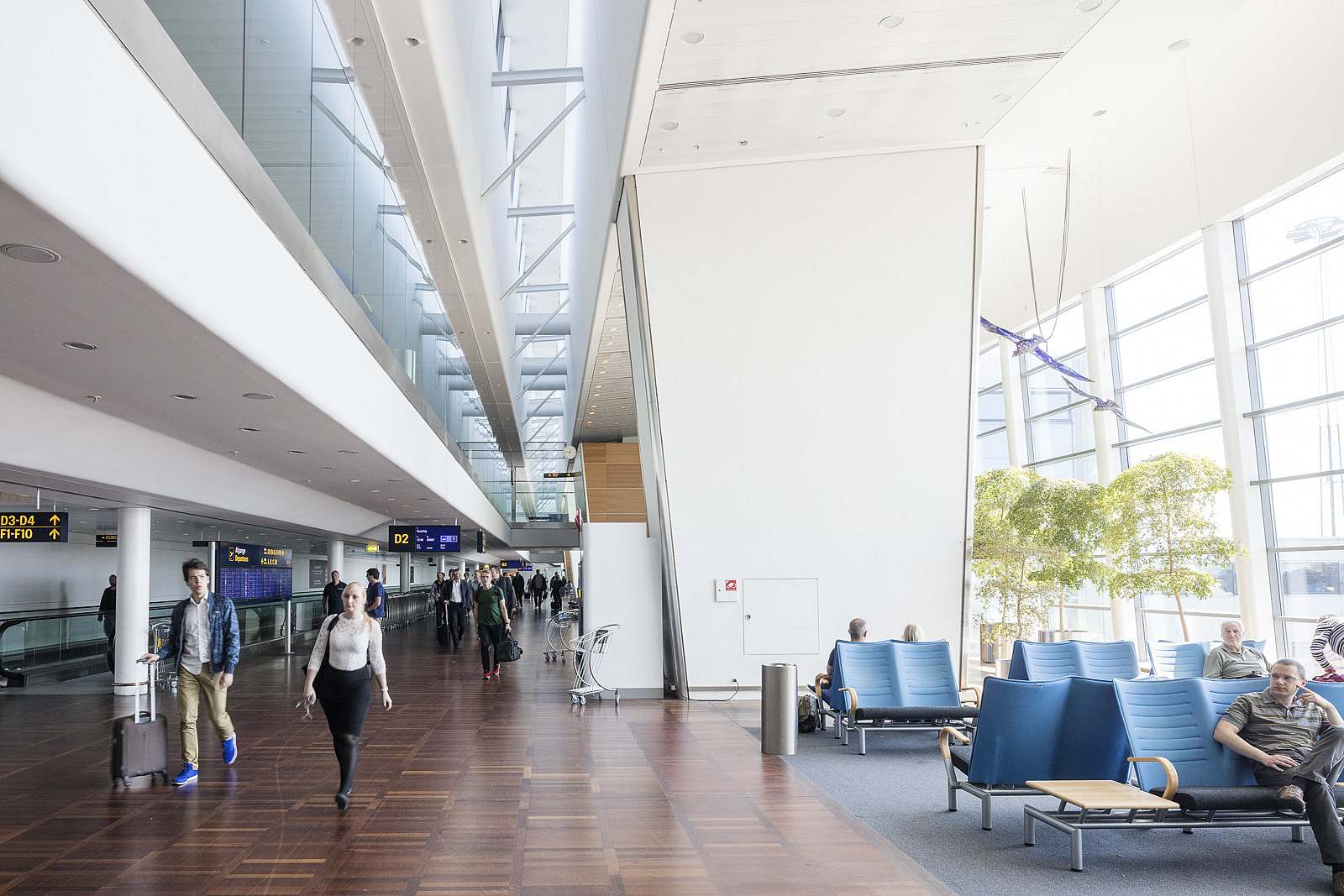The expansion of Copenhagen Airport with a new 'finger' is just one of several projects that KHR Architecture has completed for CPH Airport. The building totals 9000 m2 and serves as a link to terminals A, B and C.
In addition to the projects at Copenhagen Airport, KHR Architecture has also been the architect on a number of other infrastructure projects, including Arlanda Airport, Billund Airport, Copenhagen Metro and a number of stations.
Kastrup
Denmark
Copenhagen Airport
1999
9000 ㎡
DKK 150 M
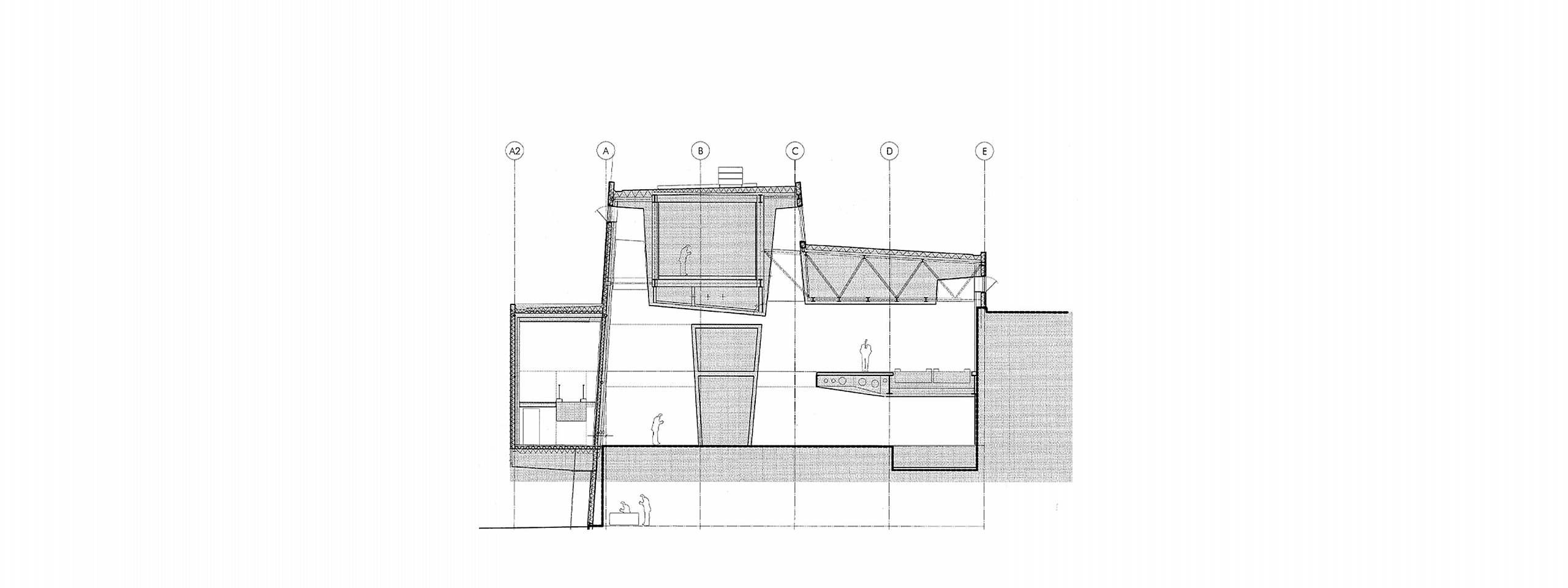
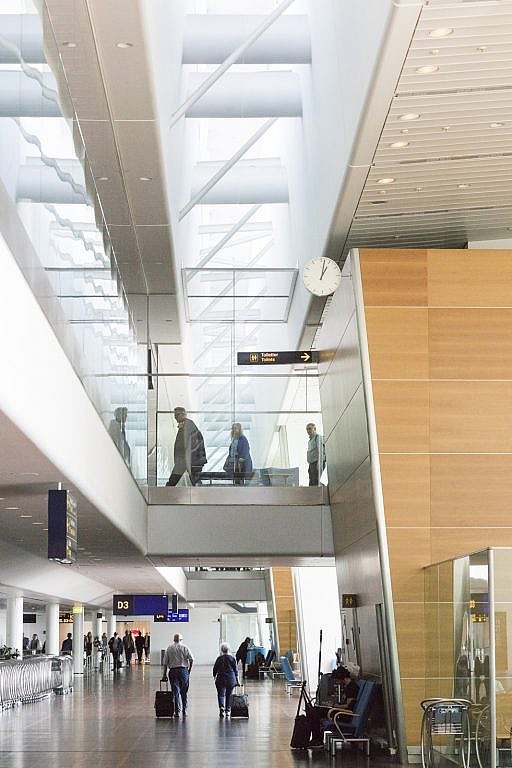
Two kinds of traffic
Finger D is the first building in Kastrup to be prepared for non-Schengen/Schengen traffic. The finger is on 2 floors with non-Schengen passengers on top. To respect the "land border" between the two areas, there are over two metre high glass partitions all around the non-Schengen.
The separation between non-Schengen and Schengen passengers is done via an elevator/staircase immediately after the passengers leave the bridge and enter Finger D. The stairwells are located outside the through façade. Non-Schengen passengers then walk on footbridges across the lounge and Schengen area to a balcony level with longitudinal moving walkways leading them to passport and security control. The Schengen area also has moving walkways through the 200 m long connecting area.
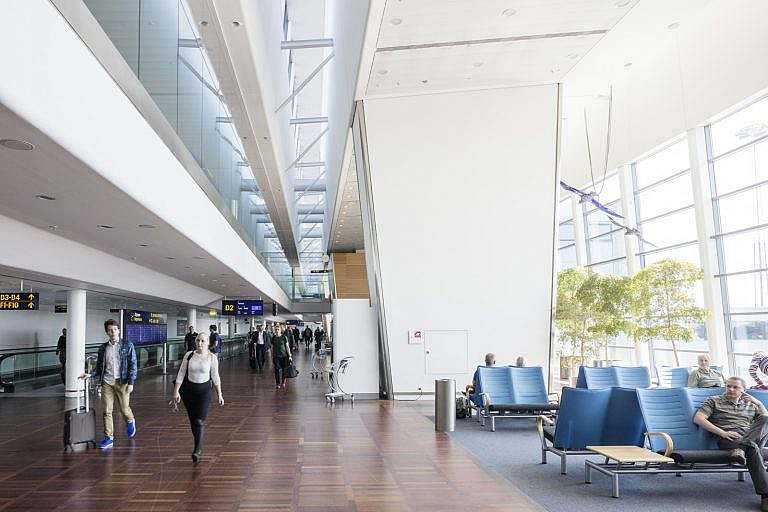
Connectors
The name, Finger D, is actually misleading. The existing fingers: A, B and C in Kastrup are located perpendicular to the south and all emanate from the main direction, where all the terminals and shopping centres are located in a unified band. The strip extends from west to east from Terminal 1 to the inland terminal, via the bus terminal to Terminal 3 - the station terminal. Finger D forms part of this belt as a link of approximately 200 m to a new Terminal 4. The finger is approximately 9,000 m2 and was inaugurated in 1999.
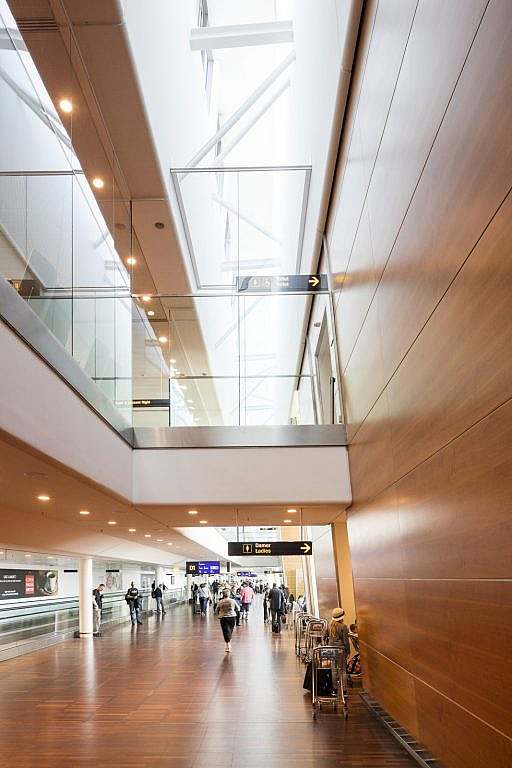
"Finger D is the last major expansion of Copenhagen Airport. It has been developed as a natural extension of KHR's projects at Copenhagen Airport starting with Finger B in 1986."
Lars Kragh, Managing Director and Partner, KHR Architecture
Contact

